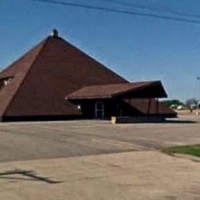The American population is settled mainly along the Eastern seaboard. The largest city, New York, with almost 80,000 people, is one of only about 15 cities with more than 1,000 inhabitants. Meals are available in taverns, oyster houses, coffee houses, and French restorators. Most diners are male travelers, businessmen, or boarders, though religious societies and clubs of firefighters, politicians, or old soldiers gather for banquets from time to time. The dinner hour falls between noon and 3:00 p.m.
Highlights
1800 Meat, fish, and fowl are the principal offerings of eating places, and an establishment’s quality is measured by the amount and assortment of animal protein set out on the table. At the Portland Restorator in Portland, Maine, the proprietor proudly announces he has “potted lobster, potted eel, chicks fricaseed, and fine ragouts, beef alamode, and barbicues, sausage Bologna, Hamburgh, Naples, choice venison pastry, pork pie Cheshire, good beef steak, and bacon rasher” as well as “round of beef, fat Sirloin, turkey roast, or calf’s head boil’d with tongue & brains.” Beyond these main dishes, he supplies only soup and a few pies. Strangely, he does not mention one of the most popular edibles of the 19th century, oysters.
1801 Well-off Americans who read fashionable magazines are fascinated by the popularity of restaurants in Paris. There, it is said, “everybody” (who is anybody) dines frequently outside the home. The awkward term “restorator,” an Americanized version of restaurateur which refers either to a place to dine or to its proprietor, becomes a trendy metaphor for a publication, an essay, or an editor.
1802 Napoleon offers amnesty to his opponents and many French citizens who escaped to America during the revolution return to France, shrinking the number of skilled restaurateurs. Not all leave, however. Julien continues in Boston.
1802 The inimitable black caterer Othello Pollard, of Cambridge MA, beckons “select” clients from nearby Harvard with beefsteak, soup, cheese, ham, tongue, ice cream, custard, strawberries and cream, whip-syllabub, pies, jellies, olives, and fruit, along with a well-stocked liquor cabinet. In an unusual advertisement, he observes: “It is a wise saying … that the Body is as much a subject of education as the Mind. Both require tuition and discipline. The UNIVERSITY takes the Mind for its pupil; OTHELLO takes the Body. He, therefore, who has not been at both schools is half a Scholar.”
1803 In Charleston, South Carolina, a new hotel opens with a banquet room accommodating 300.
1807 The beefsteak and oyster house remains a popular sort of eating place. Turtle soup is a delicacy and restaurants place notices in papers when they are about to prepare it. On June 8 Wm. Fryatt, who has recently opened a Porter, Beef Steak and Oyster House on the corner of Pine and Nassau in New York, advertises he will prepare the last turtle of the season.
1808 Henry Doyhar of New York City announces that he will list his dinner specials in writing each day: “To accommodate those who wish to procure their Dinner …, the bill of fare, containing the dishes regularly numbered, will be exhibited every day from nine till eleven o’clock, A.M. for the purpose of engaging beforehand such dishes as may be wanted.” Since so many people are illiterate at this time, this suggests his clients are educated and probably wealthy.
1809 In Boston the elegant and expensively built Boston Exchange Coffee-House opens with a coffee room on the ground floor, furnished with a bar and 14 private and “handsome boxes, each containing a mahogany table, seats, and a bell rope.” On the second floor is a banquet hall and a dining room whose “walls are painted a beautiful green, and the windows decorated with curtains of scarlet moreen.”
Read about other decades: 1810 to 1820; 1820 to 1830; 1860 to 1870; 1890 to 1900; 1900 to 1910; 1920 to 1930; 1930 to 1940; 1940 to 1950; 1950 to 1960; 1960 to 1970; 1970 to 1980
© Jan Whitaker, 2008













 It's great to hear from readers and I take time to answer queries. I can't always find what you are looking for, but I do appreciate getting thank yous no matter what the outcome.
It's great to hear from readers and I take time to answer queries. I can't always find what you are looking for, but I do appreciate getting thank yous no matter what the outcome.



Pingback: I have type 2 diabetes – what can I eat? | Glassview Farm
What a cool blog you have here!
Jan, perhaps the advertisement for the Portland Restorator was run during the “months WITHOUT an ‘R’,” and oysters were not in season? Since oysters were generally considered seasonal, ads from September through April often announced their availability. How common was the Beefsteak & Oyster combination? And were the oysters seasonal at these places?
Hi Michael — the notice for the Portland Restorator was run in December. Oysters were considered seasonal then, I believe. I can’t say exactly how common the combination of steak and oysters was but there were places that were called “Beefsteak and Oyster Restorators” and I found an 1805 quotation in reference to a Virginia restorator which argued that “the moderns” were so much better off than “the ancients” because: “Did they ever know the union of Beef Steak and oysters?” — Jan
HI LOVE YOUR BLOG –BUT ONE CORRECTION –THE ESTABLISHMENT LISTED ABOVE WERE MOST CERTAINLY CHARLESTON SC NOT CHARLOTTE NC–IN 1803 CHARLOTTE WAS A FRONTIER TOWN OF ABOUT 800 PEOPLE AT THE MOST –THANKS FOR ALL YOUR FABULOUS WORK.
Jeff, You are absolutely correct — in my notes it is clearly Charleston SC but somehow I transposed it and didn’t even notice. Big thanks!